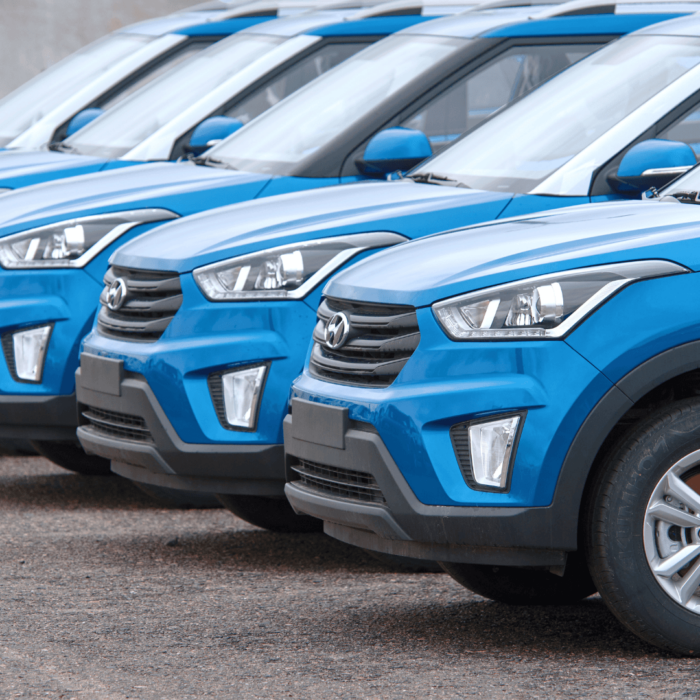Team Cardata
4 mins
What are Variable Costs in Fleet Programs?
Did you know that companies that migrate to accountable, software-driven reimbursement programs can cut fuel spend by 55 percent? There are many variable costs associated with company-owned fleets of vehicles. Read through some of the most common costs and how FAVR can provide an alternative Variable fleet costs feel unpredictable, yet most of them also […]

Did you know that companies that migrate to accountable, software-driven reimbursement programs can cut fuel spend by 55 percent? There are many variable costs associated with company-owned fleets of vehicles. Read through some of the most common costs and how FAVR can provide an alternative
Variable fleet costs feel unpredictable, yet most of them also respond quickly to disciplined analytics. The following sections examine fuel, maintenance, wear-and-tear, accidents, and incidentals, explaining why each category balloons and how targeted technology or a change in vehicle reimbursement program can turn them from budget sinkholes into competitive advantages.
Fuel
Fuel is usually the largest line item for fleets because prices fluctuate daily and can differ by more than a dollar a gallon across states. Electrifying even a slice of the fleet delivers an immediate savings jolt; early corporate adopters report that electric vehicles can help cut fuel costs. Meanwhile, fleet cards can be another strong strategy to impose purchase controls that cap transaction size, reject premium-grade gasoline for vehicles rated for regular unleaded, and block non-fuel items, helping to apply parameters on fuel spend.
Maintenance and Repairs
Mileage is a silent cost multiplier because every extra trip accelerates the service cycle. According to the AAA, the typical vehicle costs about $792 a year in maintenance. Electric vehicles reduce that figure to roughly $400 because they have no spark plugs, belts, or transmission fluid to replace, representing a 75 percent drop. When telematics devices feed real-time diagnostic codes into preventive maintenance software, managers can intervene before a warning light becomes roadside downtime or a costly DOT violation.
Tires and General Wear-and-Tear
Tires, wiper blades, and brake pads degrade with every mile, and vehicles depreciate about 30 percent the moment they leave the lot. Centralizing tread-depth, alignment, and torque data lets technicians schedule timely rotations and inflation checks that add thousands of miles to tire life while keeping drivers safer on the road.
Accidents and Insurance Surprises
Motor vehicle crashes remain the leading cause of workplace fatalities, and a single on-the-job fatality can impose costs of $70,000. Telematics units equipped with dashcams and defensive driving training can reduce collision rates by 52 percent, a drop that reverberates through liability premiums and workers’-compensation reserves.
Technology and Program Levers That Drive Savings
Compared to company-owned fleets, Fixed and Variable Rate (FAVR) reimbursement programs take a different approach. A FAVR plan splits up both fixed and variable costs for employee driving, and tailors payments to local fuel, insurance, and maintenance prices. This can have substantial benefits, including trimming total reimbursement spend by about 30 percent compared with flat stipends on taxable allowances. Beyond financial benefits, FAVR can typically provide a more accurate reflection of actual vehicle expenses for employees, creating fairer payments. When a FAVR program is compliant with the IRS requirements, payments are eligible to be tax-free, benefitting both employees and employers.
Automated mileage capture apps, such as Cardata Mobile, replace manual logs with GPS-verified trips. This can free up approximately forty-two driver hours per year that can be redirected to revenue-producing customer visits, and more. Finally, route optimization algorithms that account for traffic, weather, and delivery windows can help make trips more efficient.
Calculating ROI and Building the Business Case
Organizations that outsource reimbursement administration often record returns on investment because the service uncovers hidden cost leaks and halts taxable overpayments. Management can then apply expected reduction percentages—such as 30 percent reduced costs with FAVR—to forecast savings. Comparing these savings to the projected costs of hardware, software, and change management typically reveals that most programs pay for themselves within the first fiscal year.
Actionable Next Steps
To start, consider beginning with a twelve-month audit of fuel, maintenance, and incidental expenses to create a credible baseline. Run a pilot telematics deployment with a small driver cohort to verify in-house that incident rates fall and drivers find a benefit. Finally, engage a reimbursement specialist to model how a FAVR program compares with your current allowance or company-owned fleet; this expert analysis will clarify the fastest path to measurable savings.
Call to Action
If you want to quantify your own savings potential, schedule a demo with a Cardata reimbursement expert and find out how a vehicle reimbursement solution could support your business.
Disclaimer: Nothing in this blog post is legal, accounting, or insurance advice. Consult your lawyer, accountant, or insurance agent, and do not rely on the information contained herein for any business or personal financial or legal decision-making. While we strive to be as reliable as possible, we are neither lawyers nor accountants nor agents. For several citations of IRS publications on which we base our blog content ideas, please always consult this article: https://www.cardata.co/blog/irs-rules-for-mileage-reimbursements. For Cardata’s terms of service, go here: https://www.cardata.co/terms.
Share on:

